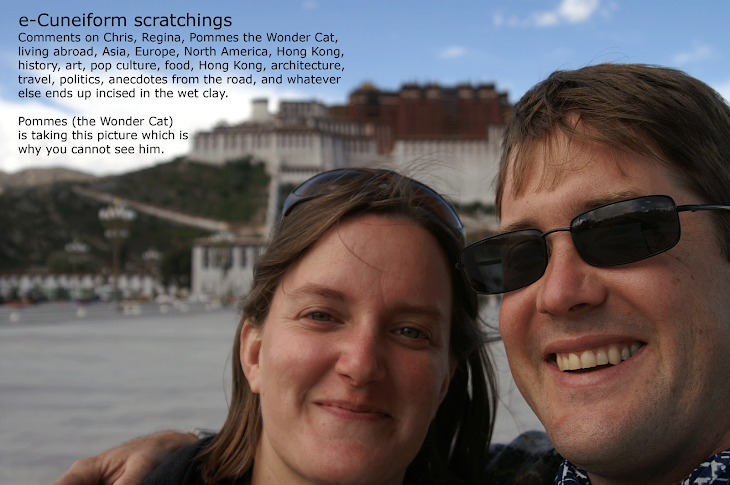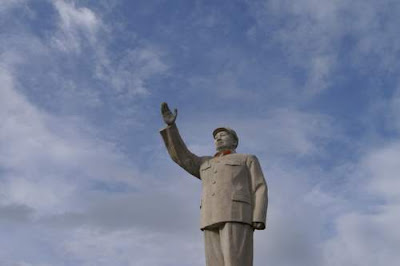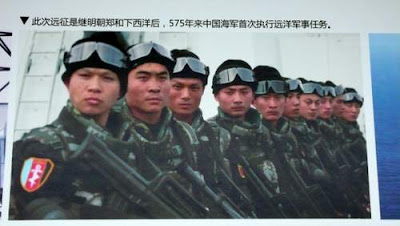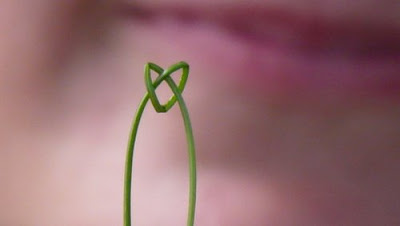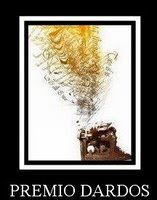 Dear Gentle Reader,
Dear Gentle Reader,After Monday's visual post on institutional enforcement mechanisms of the social contract in China, I thought it only fair and reasonable to recall a similar example from the West, and maybe raise a few topics more explicitly, though tangentially.
It was a dark night, in 1988, that I arrived in Belfast.
I had been cycling and hiking around Ireland and Northern Ireland with my girlfriend after a sojourn in Egypt.
Sometimes, in Ireland, it was a challenge to have an English girlfriend, but Popsy was not only lovely, she was my interpreter.
While, allegedly, everyone spoke English, many of the dialects and accents were too thick to fit comfortably into my tiny ears, accustomed as they were to the certain, known accents of General American and of California, broadcast through the air into all of our homes in the USA and in Canada.
Popsy and I had been cycling around, and across, Ireland for a numbler of days. (A numbler is too many to count, especially when it is raining, Irish style--up too, not just down or sideways.)
We had had trepidation about going to Northern Ireland because of the news footage of The Troubles that we had both grown up with, on both sides of the Atlantic, but if you were going to circumnavigate the entire island, you could not avoid Northern Ireland.
We had entered Northern Ireland via Londonderry/Derry (depending upon your regime perspective) a few nights before and we had both been surprised by the arrival maze, the structure for imposing order, and trying to create security, at the entrance to the city.
The arrival maze was a chain-link fence, extending ten feet or so above our heads, where armed soldiers stood on a platform, looking down upon us.
Those elevated soldiers, and others, at face level, protected by bullet-proof glass, scrutinized us for suspicious behaviour or gait or packages or something.
Those soldiers determined who was allowed admittance (definitely to Londonderry only, not to Derry)--and who was shunted off for further inspection and possible detention.
The maze forced you into a serpentine, single-file line and was clearly designed to funnel, channel, control, and regulate large crowds.
For us, however, it was a momentary experience; we arrived in the middle of the afternoon with zero people in the chain-queue and we were through it in a trice.
We were through it so fast that it left just a wisp of a wondering memory. The soldiers, though intimidating, were soon forgotten, like Irish faeryfolk.
It was soon obvious, to us, that that maze was simply some institutional stickiness; a holdover from "The Troubles" that no one had bothered to dismantle or that vested interests wanted to keep to justify security expenditures.
It was obviously a holdover because, as we cycled gaily and drank our way across the Gaelic Northern Coast, we saw no sign of The Troubles.
Within a day, the majuscule Troubles had been downgraded to merely the troubles, a minuscule memory of prior strife and attempted insurrection.
Obviously reason and rationality and common humanity had won out, we decided, but the Press wouldn't let good stories like death and despair drop.
The people we met were uniformly cheerful and welcoming and the villages had a ruddy, wholesome, vivacious appeal.
And, helpfully, we never received any snarky comments, or muttered threats, or curses, about Popsy's obvious Southern English accent and origins.
Wind ruffled hair, but nationalism no longer seemed to ruffle feathers, or concerns, in the Northern Ireland which we discovered.
We skipped from one hexagonal chunk of columnar basalt to the next along the Giant's Causeway in County Antrim and sang taunts to Fionn mac Cumhaill (transliterated to Finn McCool for those with no Gaelic blood in their tongues or their ears), daring him to arise from slumber to test skills with us.
Geologists will tell you that the Giant's Causeway is composed of columnar basalt, specifically igneous basalt (one type of lava), which has cooled quickly, usually as it jetted up from the hot centre of the earth into water.
Mythologists will tell you that the subject of the infamous (in Gaelic myths) Fiannaidheacht, the cycle of myths relating to Fionn mac Cumhaill, threw rocks violently into the harbour, making a pathway to Scotland for a multiplicity of reasons.
Maybe the causeway, later destroyed, was built to have a tussle with a Scottish giant, maybe to provide security for Fionn mac Cumhaill's mythical Irish state from Scottish giant aggression, maybe to facilitate a crossing to Scotland and staying dry the whole while, maybe for an amorous adventure...
Who knows? We tried awakening Fionn mac Cumhaill to challenge him to a duel, the loser having to answer questions truthfully.
Fionn didn't respond to our taunts and we were unable to reduce multiple possible answers to a single truth.
Having played Gaelic football, hurling (an Irish, martial combination of hockey and lacrosse), and engaged in general mayhem in Irish bars with Irishmen and Irishwomen, around the world, I have come to accept that Gaelic answers tend to be multiple, which is wise to know, especially if you offer to buy a round.
"You're buying a round of pints, Chris? I'll take three..." (!)
But, back to that trip. Popsy's right knee had been giving her trouble throughout our Irish expedition.
For four hours of one day I had cycled behind her and would grab her seat (usually the bike's, for clarity) and would sling her and her bike forward as her knee was swollen and too painful to pedal.
Hiking along the Giant's causeway, Popsy started to get twinges in her knee, again, and for the jaunt down to Belfast I suggested that we pack up the hired bikes and take the bus, a suggestion that was accepted with alacrity and relief.
While the bus stopped at some pubs, for liquid relief, prior to entering Belfast, the bus had made no special security stop on entering Belfast itself.
We just coasted into downtown Belfast, alighted from our coach, and fished our bikes and bags from the bowels of the bus.
Well, I fished the bikes and bags out of the belly of the beast.
Popsy stamped her feet against the night's chill and leafed through the guidebook for recommendations on cheap places to stay while I mantled (the opposite of dismantled, no?) our bikes.
And then we set off.
As I said, in the very beginning, it was a dark night when we entered Belfast.
There was a crescent moon hanging in the air, a huge abyss of blackness broken at ground level by weak street lights, and a thin film of wet fog hugged the ground and sniffed, wet and limp, around our ankles and buttocks like an old dog.
Leaving the bus station, we were surprised by another maze, just as in Londonderry/Derry, and here it was a bit of a problem getting our bikes through this maze.
We had to roll our bikes vertically through this maze, on back tires alone, as the walls of this maze were closer, tighter.
This was awkward, as our panniers, or bike bags, were not meant to be suspended at this angle, but, it was night, and the chain-queue was empty.
True, the soldiers seemed surly, but we, again, were through in a trice, as we had been before, the first time we had encountered this maze system.
And, erasing the momentary discomfort of the soldiers' rough scrutiny, straight in front of us was Belfast's baroque revival City Hall, standing proud in the centre of Donegall Square.
We were incredibly fortunate because we had the view of the grand structure floating on the ground-hugging fog all to ourselves; there appeared to be nobody else around.
There were not even any cars.
The city was preternaturally quiet and still and beautiful.
Except for the kids standing still with green glowsticks that I could now make out through the ground-level mist.
There appeared to be a line of kids on both sides of the street, Gothic kids, perhaps, in black, who were hard to make out, but they all seemed to have green glowsticks or something.
Maybe they were Druids, I thought, hopefully.
Had we stumbled on some archaic, once-a-year druidic festival in Belfast?
Excited, I turned to ask Popsy about it, and whether we could ride our bikes now, and to ask her how her knee was, when I noticed the green dots on her chest.
And then I looked down and saw green dots on my own chest.
Popsy looked slightly ashen and told me to keep walking.
She said we had to get through the Square to get to the hotel which she had found in the guide book and had phoned from the bus station.
As we approached the line of stationary Goth kids I realized (a) that I really did need glasses and (b) that these were neither Goths nor Druids.
These kids in black were all elite SAS soldiers with hard eyes, big shoulders, and still adam's apples.
Further, they were all in full flak gear.
With military rifles.
Rifles raised, and ready.
With green laser sights.
And green night scopes.
And fingers on the triggers...
As we approached the column of men on Donegal Square the cluster of green dots on each of our chests reduced to one, one for each us, fixed upon our hearts.
As we walked by the column of men on our side of the street, through the silent, otherwise deserted square, one set of soldiers would train their weapons, and green laser sights, on our chests.
The first set of soldiers would continue aiming their laser sights, and hence their military assault rifles, at our chests as we walked by them.
These soldiers would only remove their aim from our chests, and return to aiming at non-existent oncoming traffic, when the next set of soldiers had trained their weapons, and green laser sights, on our chests.
They were avoiding each other's line of fire, while keeping us covered at all times.
When there were two green laser sights on my chest, at each laser sight handover, I swear I could feel the hot threat directly on the meat of my heart.
It was a physically sobering walk.
The effects of the Guinness, from the last stop of the bus prior to Belfast, left our minds rapidly as an adrenaline cocktail raced through our bodies, purging impediments to our fight or flight instince.
We fought the adrenaline and tried to stay calm, although we did walk much faster when we were through the cordon sanitaire and on our way to our hotel.
Later, that night, safely at our hotel, we were serenaded to sleep by the not-distant-at-all percussionary whumps of bombs.
Enforcement mechanisms frequently have their reasons.
It is the justification, and the triggers, and, potenially, the proportionality of enforcement mechanisms that are tricky and worthy of serious consideration.
Enforcement mechanisms, as security structures in societies, are found everywhere, and in every form of State, although Monday's and today's posts are more of the in-your-face variety.
Most discussions around rights revolve around the personal, civil rights of the citizenry, and the obligations of the State to its citizenry.
Sometimes those discussions stray into the obligations of the citizenry, in return for the rights they enjoy.
Rarely, however, do those discussions, consider the rights which the state reserves to itself, and what the manifestations of those rights can look like, unless the discussion is a diatribe.
Maybe the British government was justified in the soldier's response that night, and many other nights.
Bombs went off.
People died and property was destroyed there, and in England, and the carnage had been ongoing for decades.
Reasonable men and women, ignoring the unreasonable ones, have come to very different conclusions on the neccessity or reasonableness of English actions in Northern Island.
The War Measures Act was imposed, in peacetime, in Canada in 1970--a country frequently seen as paragon of virtuous civil society.
And there are the displays of state force in China.
Nothing is necessarily black and white, however, especially when considering the architecture, or structure, of security operations and apparatus.
Analysis and contemplation are always required.
That I leave to you, Gentle Reader, and I know that I leave it in good hands and minds.
I simply advocate a good look around, even if it is only while judiciously leaving a site.
I generally feel secure about a structure only when I understand its makeup, its rationale, and its footprint.
Tschuess,
Chris
